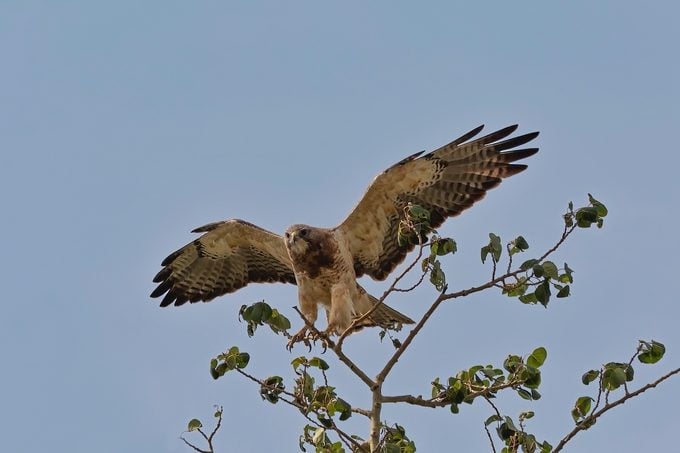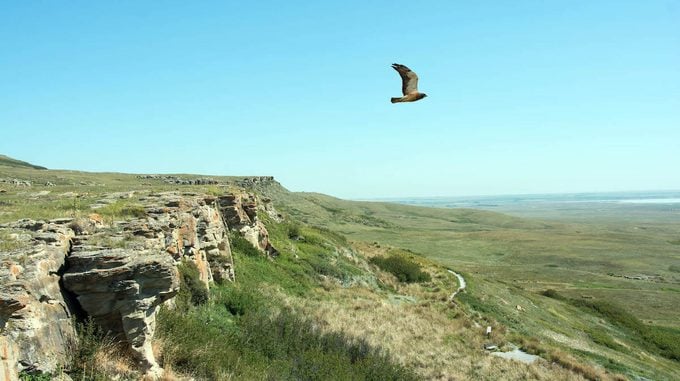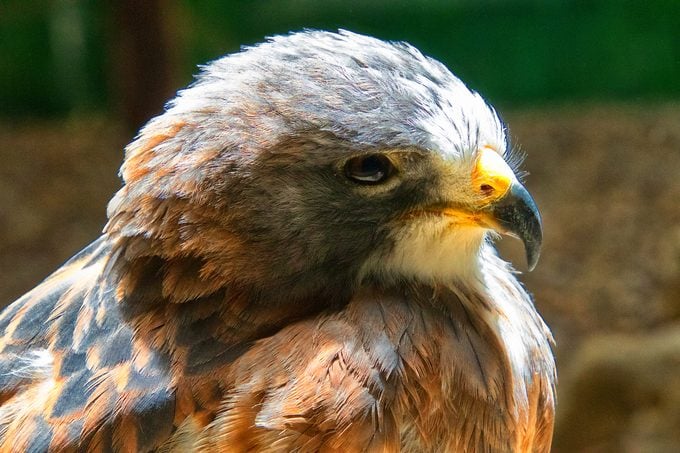Look for Swainson’s Hawks in the Summer Skies
Updated: Oct. 03, 2023
Learn what a Swainson's hawk looks like, what they eat and where (and when) birders can find them in North America.
What Does a Swainson’s Hawk Look Like?

A Swainson’s hawk has dark plumage on the head, upper body and wings. The tail is finely barred, with a broad band near the tip. Also look for a white throat patch under the bill.
Some birds have an all dark underside (dark morph); others are mostly white with dark breast band (light morph). Juvenile birds have a heavily streaked breast.
While soaring in flight, a Swainson’s hawk holds its wings slightly above the horizontal—a useful hawk identification clue.
Discover 9 types of hawks you should know.
Habitat and Range

Look for these birds of prey in brushlands, plains, open grasslands and foothills. The raptors are commonly seen in the western states and Great Plains during the summer breeding season. Their range extends into western Canada and Alaska.
ID Challenge: Cooper’s hawk vs sharp-shinned hawk.
Migration

These long-distance migrants fly more than 6,000 miles, moving from Alaska to their wintering grounds in South America. But a few get off track and fly to Florida in the winter.
Less prone to migrate along natural features such as ridges and waterways, these hawks instead flock up by the thousands. The migrating flocks swirl southward. When a group settles to roost for the night, some of them will rest on the ground if there is a shortage of tree perches.
Learn how to identify a red-tailed hawk.
Diet

Although adults feed their chicks the usual small mammal hawk prey, these hawks predominantly eat insects after nesting season. They often feed on the ground, hopping after crickets and grasshoppers. They catch gophers and ground squirrels by perching patiently on small mounds of earth in front of the rodents’ burrows and waiting for unwary critters to appear.
Next, don’t miss these simply stunning pictures of hawks.




















